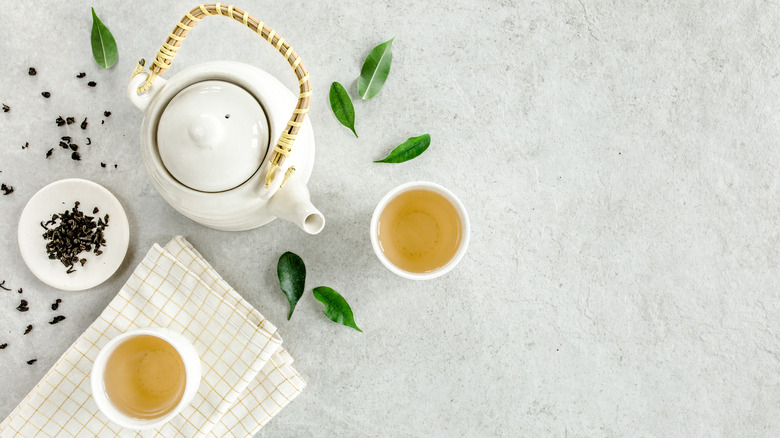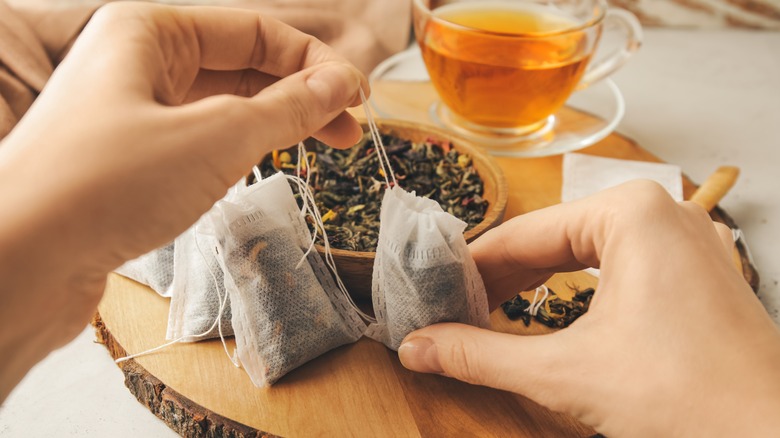Yes, There's Insect DNA In Your Tea. Here's Why That's Actually A Good Thing
Connoisseurs of caffeinated drinks often place a high value on connections to the natural world, even if the details of these connections may seem a bit strange or unusual. The classic example, of course, is kopi luwak, a very expensive Indonesian coffee whose beans, per National Geographic, are passed through the digestive tract of civets. Yes, there is a tea version, too. It's called panda dung tea, and it features tea leaves fecundated by Chinese panda bears. The price? A mere $35,000 per pound (via Sencha Tea Bar).
The examples mentioned above are exceedingly exotic and very, very rare. But according to a new study published in Biology Letters, tea's connections to the animal world are actually much more common than we might think. In fact, according to environmental DNA (eDNA) analysis conducted on teas and herbs sourced from grocery stores on four continents, the average tea bag contains DNA from about 200 different insects and spiders. Green teas, in particular, have the highest levels of this detectable insect DNA.
The study was done by researchers from the University of Trier and the Max Planck Institute for Evolutionary Biology, both of which are located in Germany, per Biology Letters. The objective was not to gross out tea drinkers, but rather, as Smithsonian Magazine notes, to trace the myriad of interactions that occur between plants and insects in nature, and to provide a new framework for assessing the health of habitats.
High levels of insect DNA point to minimal presence of pesticides
Although the results of the study may be a bit off-putting to tea drinkers at first glance, its implications suggest a silver lining, which is that the teas studied were obviously not impacted by pesticides, per Smithsonian Magazine. Additionally, although the teas leaves obviously came in contact with a large number of insects, very little evidence survives into the finished product.
"Probably 99.999, or something like this, percent of the DNA we extract is plant DNA, and only a tiny fraction, which is left, is the insect DNA," Henrik Krehenwinkel, one of the authors of the study, told Smithsonian Magazine. "Which, of course, is good for the tea drinkers because they want to drink the tea and not the insects."
Krehenwinkel and his scientific team's most notable achievement may have been figuring out how to isolate the DNA of all the various plants and insects. But the scientists are also optimistic that their study will provide many useful avenues of additional research, including new ways to understand the routes of those insects, which are harmful as pests. Krehenwinkel also believes the eDNA analysis can be used on plant samples in museums, providing a window into the past to understand how plants and insects have evolved, and how climate change is affecting their populations.

